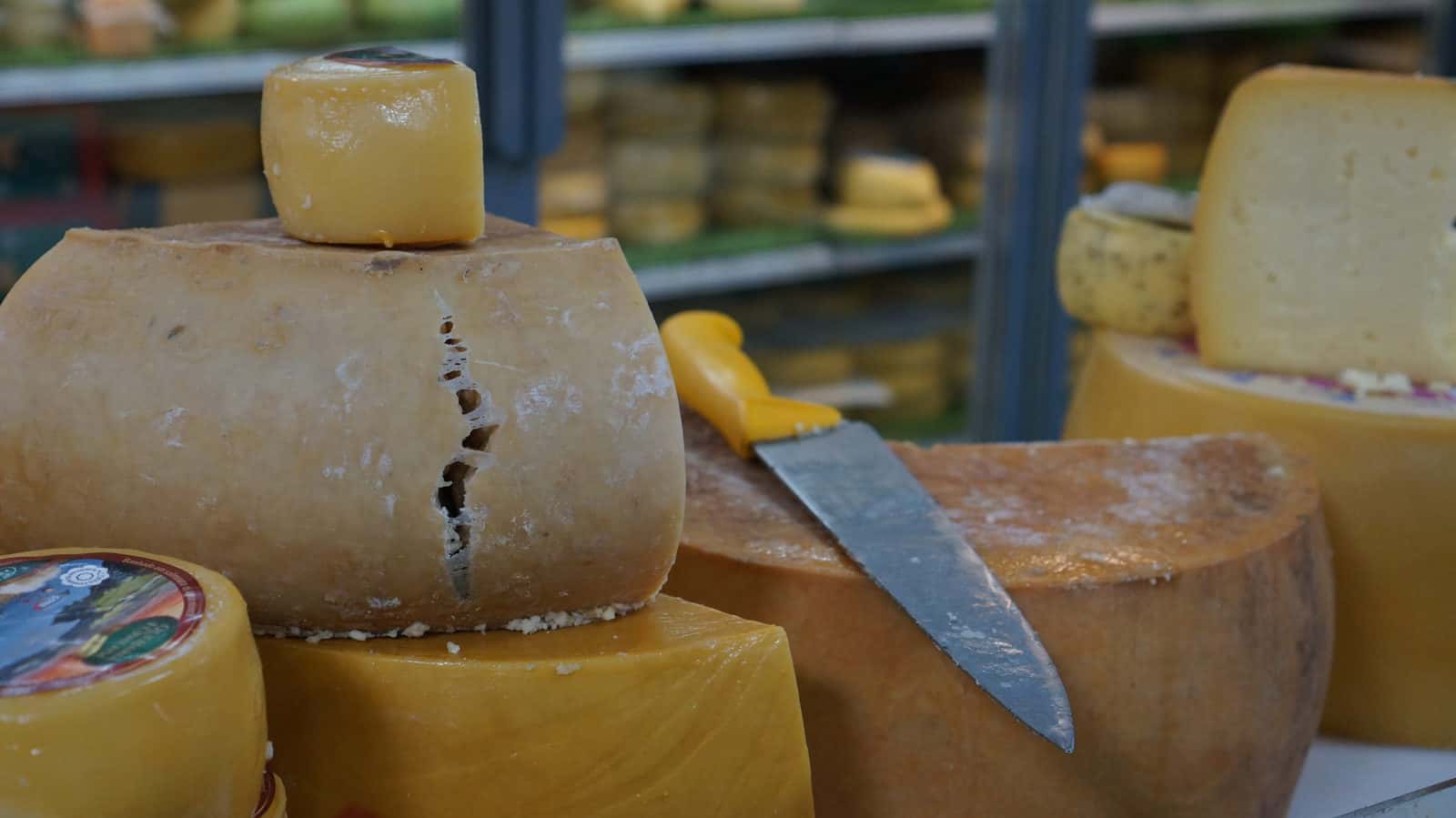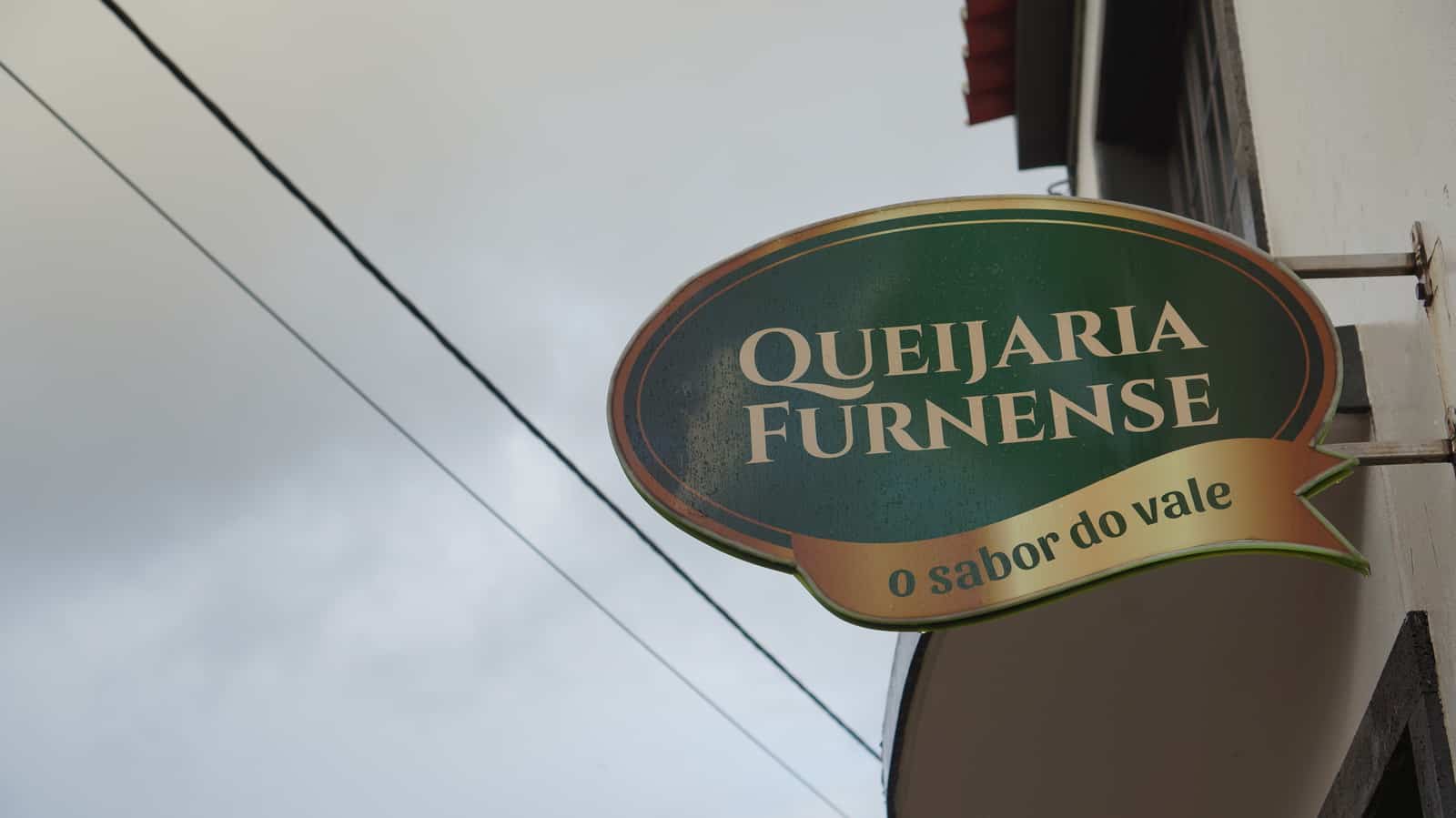
The redeye from Boston landed at Ponta Delgada Airport early. It was still dark, so I didn’t get the opportunity to gaze down at São Miguel from the airplane window. If I had, I would have seen a hilly, volcanic island covered with a patchwork of pastureland where hundreds of dairy cattle graze on lush green grass. Dairy is an essential part of life in the Azores so it was no surprise that the first thing my AirBnB host did was offer me a welcome gift of cheese.
“This is a special cheese,” she said as she scooped up the pudgy, smooth wheel. “It’s made on the island in the village Furnas.” It was Quejo do Vale—“Cheese of the Valley.”

The cheese was semi-soft with a smooth, elastic paste and golden rind. When I cut into it, I noticed a mildly pungent aroma. The dominant flavors were buttery and lactic, but there was an intriguing sour note in the background. It wasn’t until I learned the cheese was brined in acidic water from volcanic springs that I was able to peg the pungency as sulfuric. Furnas sits on a caldera where mineral-rich volcanic waters bubble to the surface from dozens of hot and cold sources. While tourists visit Furnas to bathe in the waters from a hot spring, Queijaria Furnense —“The Cheese Factory of Furnas”—uses a cool water source to brine its cheese wheels.
Early in the morning, while the cows are milked, “sour water” for the day’s brine is collected from a fountain near Queijaria Furnense. After the cheese is packed, drained, and pressed, it’s soaked in the volcanic mineral water. During this process, the cheese takes on the volcanic terroir of the Lagoa das Furnas, which imparts the signature aroma and sour flavor on each wheel.

Most of the land on the Azorean archipelago is dedicated to agriculture. Although the islands make up tiny fraction of the landmass of Portugal, they produce half of the country’s cheese and a third of its liquid milk. When the European Union ended milk quotas in 2015, 17-year-old entrepreneur Paula Rego started making cheese to add value to her family’s dairy farm. She collaborated with the Institute of Technological Innovation of the Azores (INOVA) to identify the best caldera mineral water for the cheese brine and began selling Quejo do Vale that year.

Production of Quejo do Vale includes five varieties—half-cure, buttery, oregano, and lemon thyme and garlic—all available in different size wheels. And Rego is ready to incorporate even more flavors into her business. At the 2017 entrepreneurial competition IdeiAzores, she introduced Bombons do Vale (“Chocolates of the Valley”), chocolates filled with a blend of cheese, white chocolate, and other flavors like fig, wine, blackberry, and Nutella.



